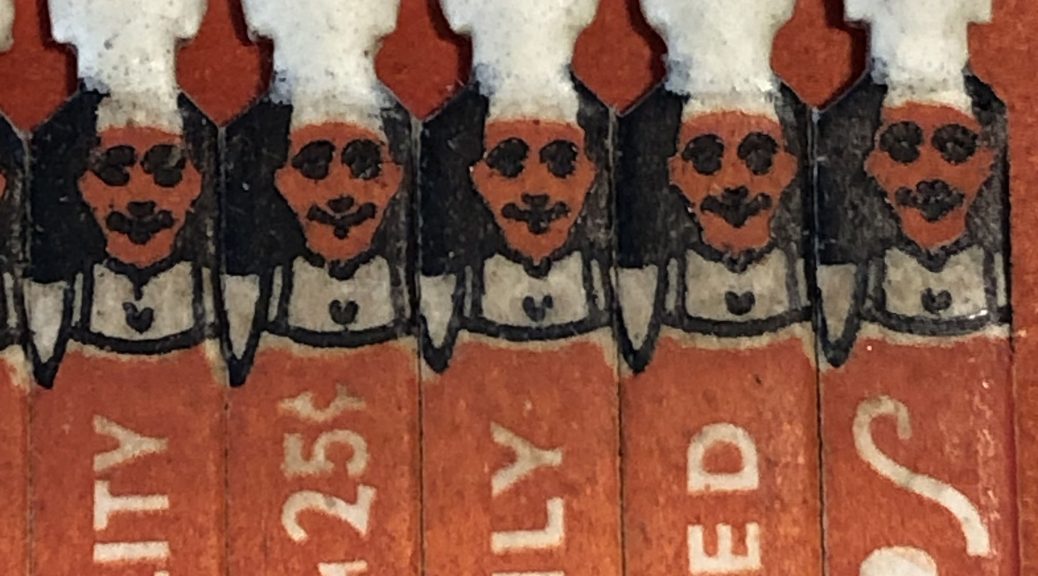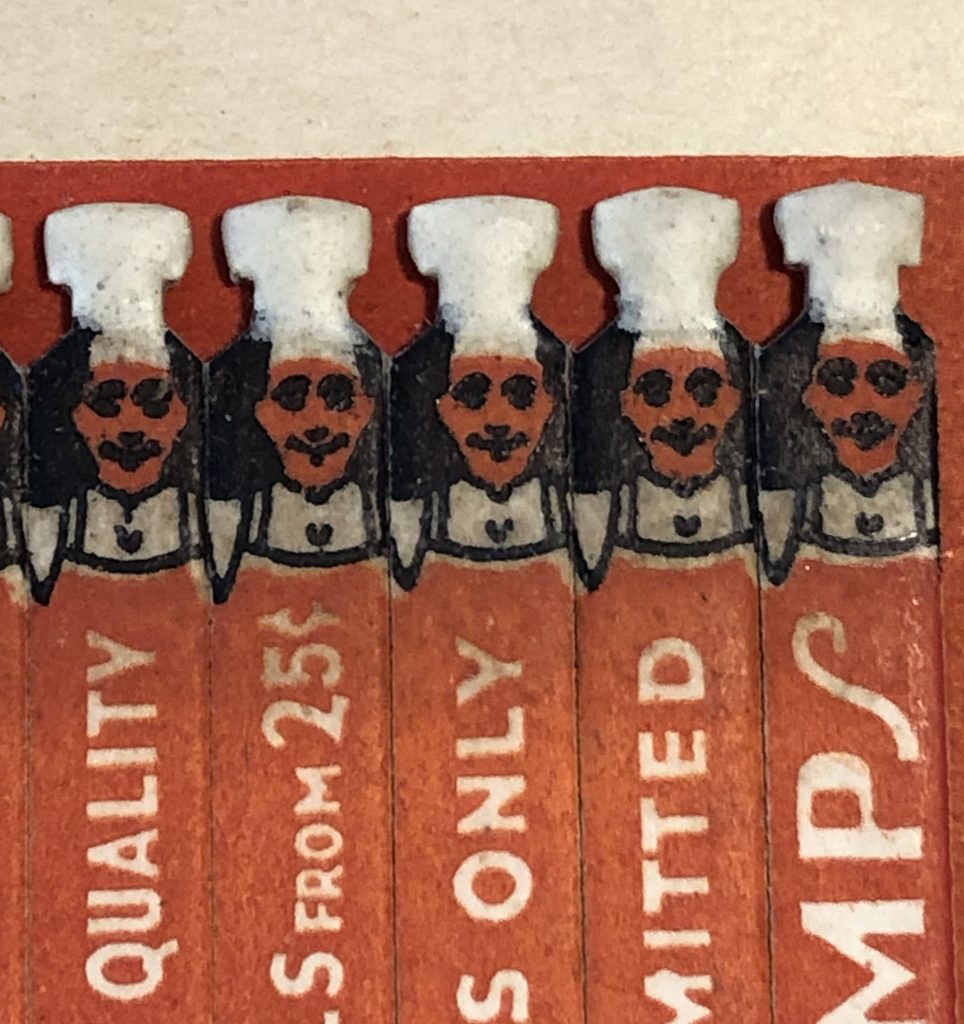We’ve written before (many times) about the unusual and sometimes problematic objects that we find in books. Scrapbooks tend to be the worst offenders for this situation. In most cases, the inserted object is either damaging the pages around it or too bulky and deforming the book. In the case of this scrapbook from the Mary Duke Biddle Trent Semans family papers, though, the problem item poses a danger to the collections around the scrapbook, too.
 Several of the scrapbook pages have paper matchbooks mounted to them. Much like the ticket stubs that appear alongside, the printed matchbook is a keepsake to remember a special occasion. These matches come from a Longchamps restaurant, where Mary dined before attending a show. The exterior of this matchbook is a metallic gold, but the real design highlight appears inside.
Several of the scrapbook pages have paper matchbooks mounted to them. Much like the ticket stubs that appear alongside, the printed matchbook is a keepsake to remember a special occasion. These matches come from a Longchamps restaurant, where Mary dined before attending a show. The exterior of this matchbook is a metallic gold, but the real design highlight appears inside.
 The matches are shaped and printed to look like rows of little chefs!
The matches are shaped and printed to look like rows of little chefs!
This scrapbook dates from the 1930s, so these are probably “safety matches” – meaning they cannot ignite without the contacting the striking strip on the cover of the matchbook. They are also quite old at this point, and may not even light using the strip. There is still a risk to the collection, however, so Rachel Penniman did some research to determine the best way to make them safe before rehousing the scrapbook.
 There are a couple of options for dealing with matches in a collection. The quickest solution is to physically remove the matches. In another example from the same scrapbook (pictured above), the bottom of the matchbook and all the individual matches were torn off before mounting. If all of the matchbooks were treated this way, then we wouldn’t have to worry, but a lot of information would be lost.
There are a couple of options for dealing with matches in a collection. The quickest solution is to physically remove the matches. In another example from the same scrapbook (pictured above), the bottom of the matchbook and all the individual matches were torn off before mounting. If all of the matchbooks were treated this way, then we wouldn’t have to worry, but a lot of information would be lost.
One of the individual matches (already used) is also taped to this page, so we can see that Longchamps used more than one chef design in their matchbooks.
Clipping off just the match head could also be a good solution for removing the potential for ignition while retaining more of the original material. If the matches in these books were more of a plain design, that could be a viable option here, but we just couldn’t bring ourselves to decapitate the little chefs. Luckily, there was another way.
Our colleagues at Northwestern University have developed a method for coating the match heads to prevent lighting. To treat the match heads, Rachel applied three coatings of a matte acrylic medium: one dilute layer to penetrate and then two coatings of undiluted acrylic to form a protective layer. After the coating had cured, the scrapbook was ready to be boxed and returned to the stacks. The acrylic medium is not tacky when dry, so it will not stick to the matchbook cover or facing scrapbook pages when the book is closed.
One of the major challenges of caring for a large research collection is the wide variety of objects and materials that are contained within it. When confronted with potentially harmful items like these matchbooks, it is so helpful to read about how other conservators have dealt with them.




